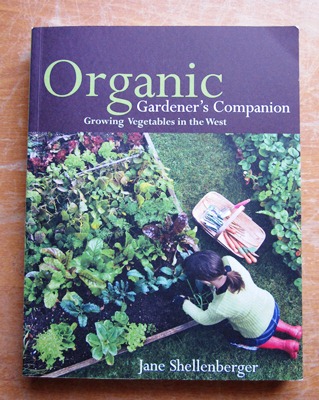
If you live in the West, you know that gardening is difficult here. Lean soils, little precipitation, low humidity, harsh winds, and inopportune freezing temperatures make vegetable gardening an extreme undertaking.
But there are at least two ways organic vegetable gardeners can overcome these challenges: build soils that support soil life and create protective microclimates for plants.
Those two nuggets of gardening wisdom are just the beginning of the expert advice Jane Shellenberger offers gardeners in her new book, “Organic Gardener’s Companion: Growing Vegetables in the West” (Fulcrum Publishing, $24.95).
Jane lives and gardens on five acres along Colorado’s Front Range, between Boulder and Longmont. For the last 15 years she’s published and edited Colorado Gardener, a regional gardening magazine.
Jane writes that she learned about plants from her botanist mother, but learned how to garden in the West the hard way. Her first vegetable bed was dug in a hard-packed dirt driveway.
Maybe that’s why she advises gardeners to start with the soil. “Our most important job as vegetable gardeners is to feed and sustain soil life, often called the soil food web, beginning with the microbes.”
Even though gardening is difficult in the West, organic gardeners are at an advantage here, Jane writes, because it’s easy to build the soil with organic and inexpensive materials.
She gives solid steps for nurturing the soil food web from adding organic material to avoiding tilling the soil after the first year a garden is established.
This comprehensive guide to organic vegetable gardening is well-researched and it doesn’t skimp on any topic. Whether gardeners are familiar with organic methods or just considering an organic garden, this book provides a complete vegetable growing education.
In addition to delving into the natural history of nitrogen, gardeners will find in-depth information on the plight of our pollinators, all the different methods for starting an organic vegetable garden from scratch, and creative ways to extend the growing season. The chapter on beneficial insects includes color images to help with identification and the chapter on pests includes weeds, as well as wildlife and unwanted insects. I especially appreciate how she tackles the difficult topic of water rules in the West.
Her book is equal parts organic gardening how-to, agricultural history lesson, weather tutorial, and geology class. Jane doesn’t just tell organic gardeners how to grow a vegetable garden, she explains why it’s important to plant one.
(Fulcrum Publishing provided me with a free review copy of “Organic Gardener’s Companion: Growing Vegetables in the West.”)
Fine Gardening Recommended Products

A.M. Leonard Deluxe Soil Knife & Leather Sheath Combo
Fine Gardening receives a commission for items purchased through links on this site, including Amazon Associates and other affiliate advertising programs.

Ashman Garden Cultivator (1Pack)
Fine Gardening receives a commission for items purchased through links on this site, including Amazon Associates and other affiliate advertising programs.



















Comments
Log in or create an account to post a comment.
Sign up Log in